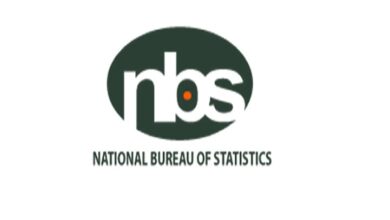Nigeria’s October 2024 Inflation Commentary: Rising Inflation Pressures Reveal Inconvenient Truths

“There appears to be an exaggeration of the Central Bank of Nigeria’s ability to contain inflation by repeatedly increasing policy rates. If Nigeria is to slay its inflation demons, it must look elsewhere” – TheAnalyst
The October 2024 commentary includes the following:
. Key Views
. Nigeria’s Inflation Amidst Global Trends
. Key Insights from October 2024 Inflation Growth
. Inflation Across Nigerian Regions and States
.Closing Thoughts: The Reign of Inconvenient Truths
- Nigeria’s inflation trend in 2024 has maintained a divergent path relative to global inflation moderations – a trend anticipated to last through the rest of 2024.
- We expect the CBN’s hawkish stance to persist through the year, with the exchange rate remaining weak as existing FX policies lead to a greater marketunification effect than the naira strengthening.
- We anticipate a rise in November 2024 inflation, given festive period activities and the persistence of unchecked risks such as a weak exchange rate, high energy/electricity costs, insecurity, and low food productivity.
- The drivers of the October inflation growth align with our outlook as anticipated in our September 2024 inflation commentary
Nigeria’s Inflation Amidst Global Trends
At the start of 2024, Nigeria’s inflation marked its 13th consecutive rise. At that time, Proshare analysts anticipated inflation would remain an arching wrecking ball with the potential to leave marks and cracks on the walls of households and businesses. In stark contrast to the global trend of falling inflation, Nigeria’s inflation has continued to rise.
Notably, the US inflation, which stood over 10% at the beginning of 2023 amidst hawkish interest rate conditions, fell to 3.4% in December 2023 and reached 2.6% in October 2024. Similar conditions played out in economies such as the EU (8.6% in January 2023 to 2.8% in January 2024 and 1.7% in September 2024) and the UK (10.7% in January 2023 fell to 4.4% in January 2024 and 1.7% in September 2024).
In Africa, countries like South Africa, Egypt, Ghana, Kenya, and Ethiopia started 2024 with inflation rates of 5.3%, 23.5%, 29.8%, and 29.4%, respectively, but all saw significant declines by September 2024, with rates falling to 3.9%, 21.5%, 26.4%, and 17.5%, respectively.
According to the National Bureau of Statistics (NBS) report, Nigeria’s inflation, which stood at 28.92% in January 2024, rose to 33.88% in October 2024 from 32.70% in September 2024 (see Chart 1 below).
Chart 1:

Key Insights from October 2024 Inflation Growth
According to theNBS, October inflation growth was primarily driven by Food, energy/electricity costs, clothing, transport, education, and health, contributing 30.37% to the October inflation growth. Analysts observe that inflation trends at the beginning of the year were prevalent in the Southern region of Nigeria; however, recent trends indicate the presence of inflation dominance in the northern region (see Table 1 below).
Table 1:

The Inflation Story Across Nigerian Regions and States
General price levels across all regions in Nigeria increased in October 2024. Despite harvest season gains, food prices also surged across all regions in Nigeria, which may compensate for the Agricultural sector PMI at 50.3 points in October 2024, above the 50 points threshold, but represents a decline in agricultural sector activities given the October agricultural PMI OF 51.4 in September 2024. We believe major risks to food productivity include logistic and supply chain constraints/cost, insecurity, FX depreciation, and energy/electricity cost (see chart 1 below).
Chart 3:

Bauchi State ranked as the state with the highest inflation for the fifth consecutive month since displacing Kogi State in June 2024. Northern states in the northeast and northwest continue to dominate the rankings of the highest inflation states, as observed in the previous month. Similar to September 2024, Delta, Benue, and Katsina were the top three states with the lowest headline inflation in October 2024 (see Table 2 below).
Table 2:

Food insecurity and nutritional challenges remain eminent. Analysts observe that states with the highest food prices all have food inflation above 40%, while states with the lowest food prices in Nigeria in October 2024 (Kwara) all have food inflation greater than 30% (see Table 3 below).
Table 3:

Closing Thoughts: The Reign of Inconvenient Truths
The current inflation trends/pressures reflect a few inconvenient truths. Proshare’s economists argue that:
- The MPR has not been a competent tool for tightening monetary policy.
- The best way to cut demand for money may be by raising the banks’ cash reserve ratio (CRR), but at 50%, it is already one of the highest in the world.
- Expansionary fiscal policies do not align with the tightening stance of monetary policies, revealing a dis-synergy.
- Key risks will continue to threaten the economy’s health, choke investment activities, and leave households in greater economic cramps, including currency/liquidity risks, low food productivity, weak/costly logistic and supply chain networks, insecurity, energy costs, and policy uncertainty.
- Three-quarters of domestic Nigerian inflation can be attributed to a declining exchange rate, meaning that to bring down inflation, the authorities need to raise the exchange value of the naira.
- The country’s high import dependency feeds into a high domestic cost narrative. Few commodities will avoid the rising price whiplash.




